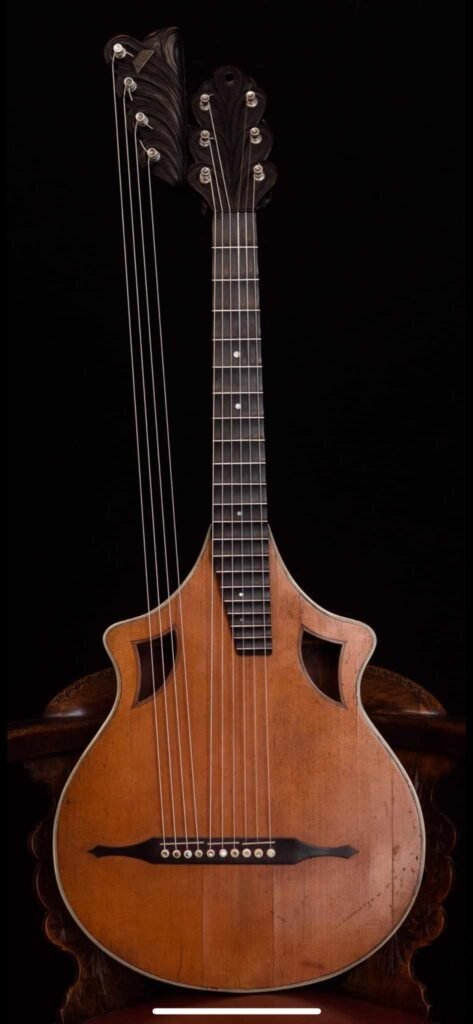August 2024 Meeting Report
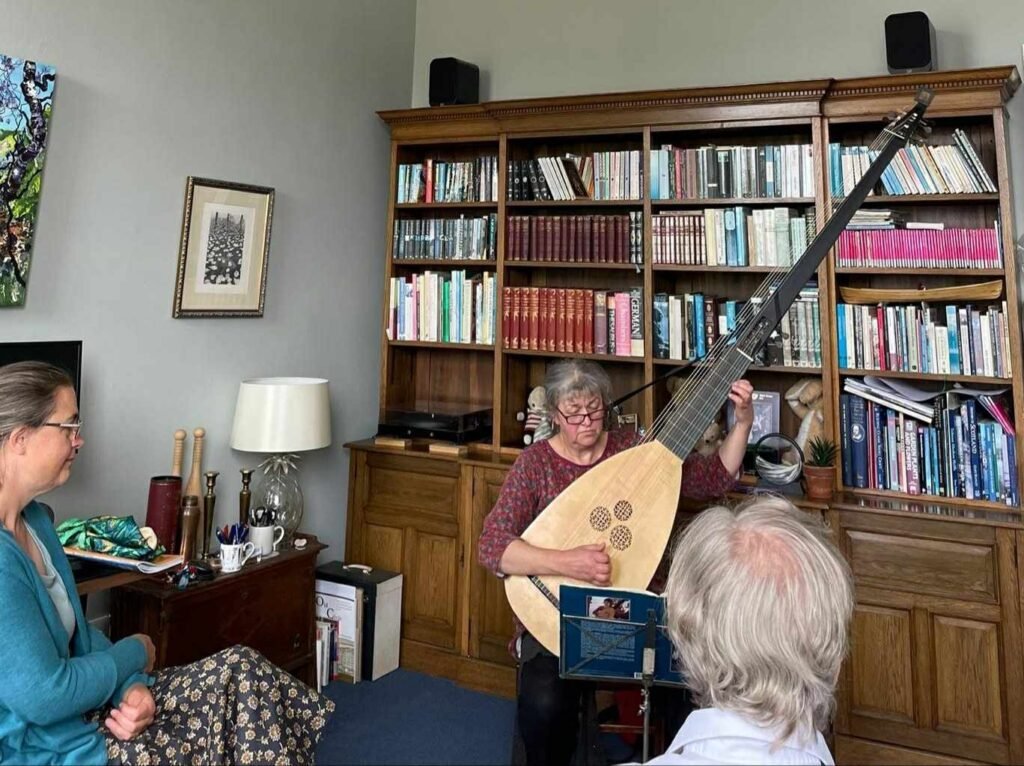
The August meeting of the Scottish Lute and Early Guitar Society was opened by Luisa McMinn. Luisa has multiple instruments to pick form and this time opted to play her 14 course James Marriage theorbo. Having tuned the instrument to 415 she played two pieces which both required reaching up to the high frets on the instrument and down to the lowest bass strings. Luisa played the very well known “Chaconne” by Robert de Visée. The tune is beautifully melancholic, and Luisa managed to fill the room with the sound of her instrument. And as one of our members remarked; it isn’t a SLEGS meeting until Luisa plays her theorbo.
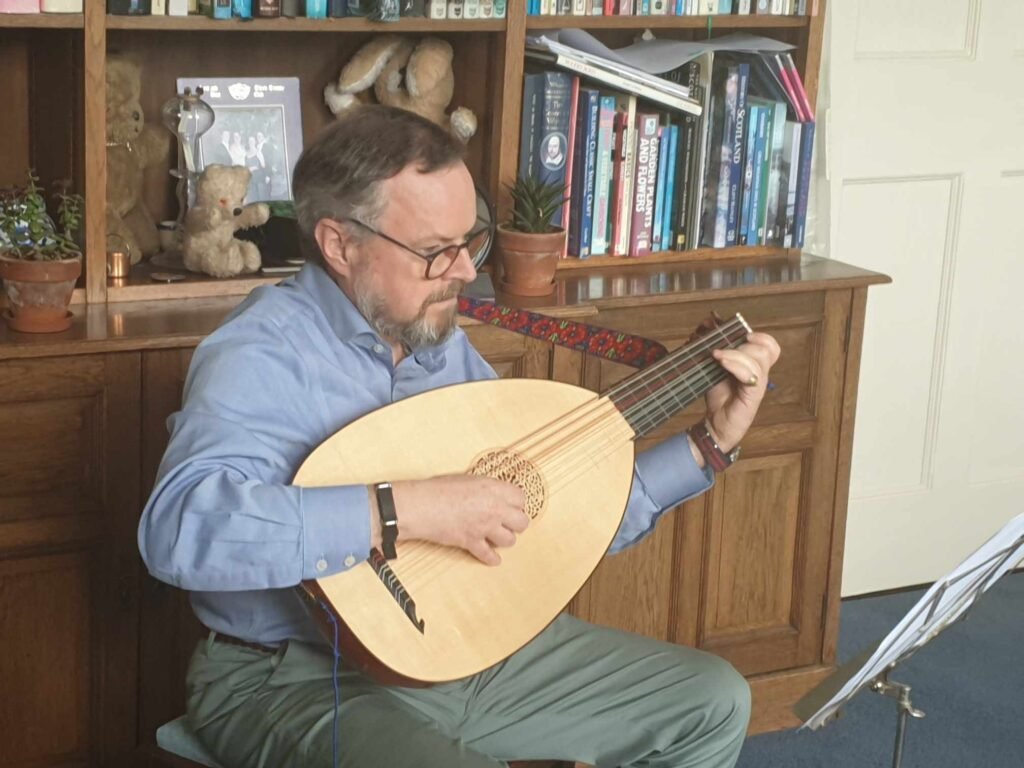
Alastair Merrill performed second. He played his new Tony Johnson 7 course renaissance lute strung with nylgut. Alastair had spent some time on Tony Johnsons waiting list, as is to be expected, so has been very pleased to spend some time on the instrument now that it is in his hands. Alastair has been practicing “Galliard No. 2” by the late 16th century English composer Francis Cutting. The Galliard is remarkably renaissance in its nature and suits the delicate sound of Alastair’s new instrument nicely.
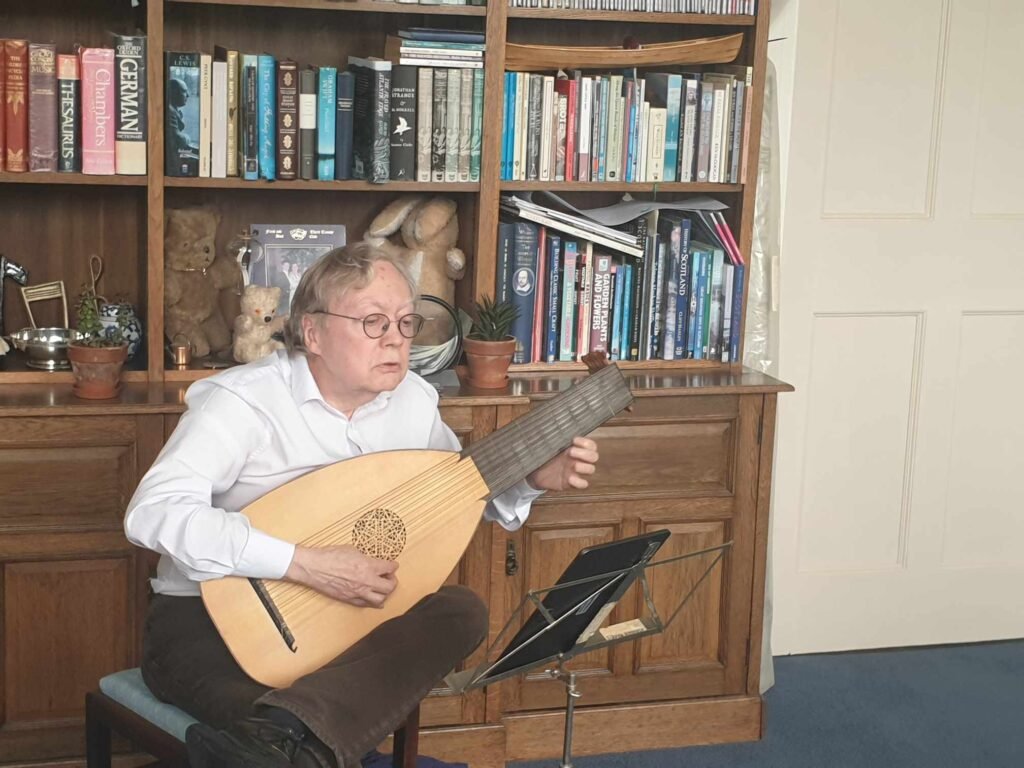
Chris Miller also joined us at our meeting. Not only does Chris’s lute have 10 courses, but it also has a 10-fret neck, a fairly uncommon feature on these instruments. Chris first played “Lost Is My Liberty”. The music Chris read from had some divisions written in, so he felt it appropriate to add in more of his own. This allowed him to play into the more Celtic motifs of the tune and give a new lilting quality to it. Chris followed this piece with a “Pavane” which while learning, he recognised a reference to Dowland’s “Lachrimae” (which we would hear again later). It’s great to hear extended range lutes at our meetings, so it was great to have Chris in attendance!
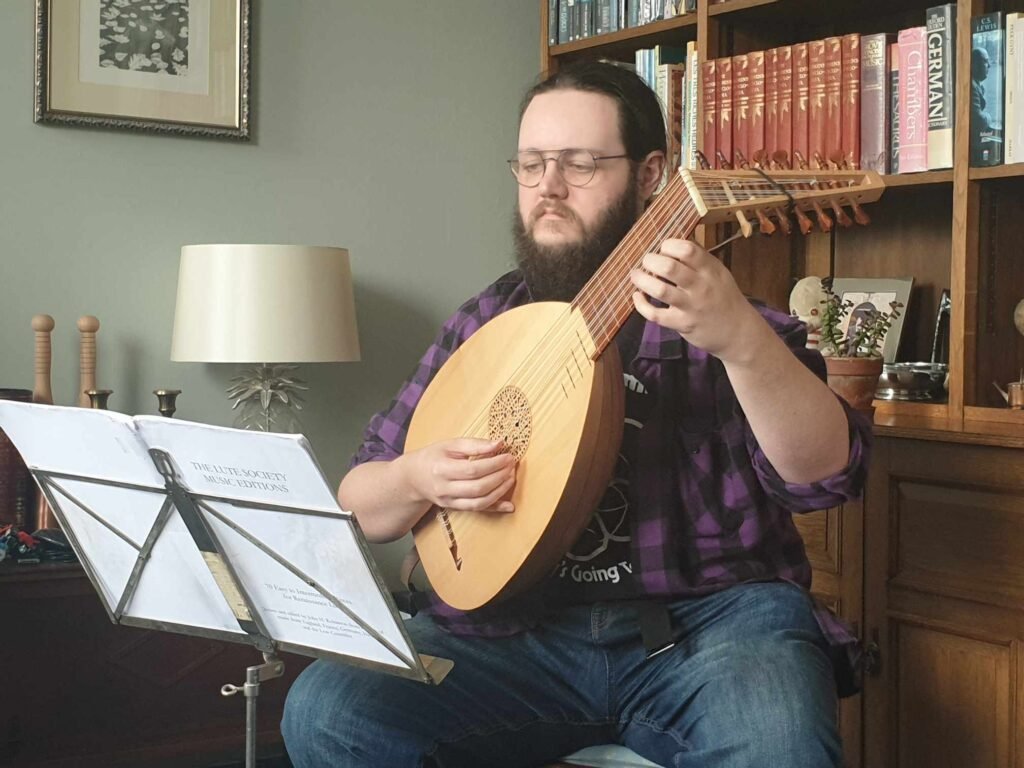
Fourth to play was Glen Robertson, who had his 8 course Renaissance lute with him. Firstly, he played “A Little Fantasie for the Tuning of the Lute” attributed to Adrian Le Roy. The piece begins by checking intervals before a melody falls out of the piece nearly halfway through. Glen told us that he enjoys playing exercises that would have been played by learners of the instrument in the 16th century as it is an insight into how people learned and were educated at the time. Glen also played “Bathori Tantz” a Polish piece from the Wurstein Manuscript, and “The Third Branle of Malte”, also from Adrian Le Roy in 1568. Glen also told us that he chose to learn both pieces for their interesting titles and unusual chords, which made for good left-hand practice.
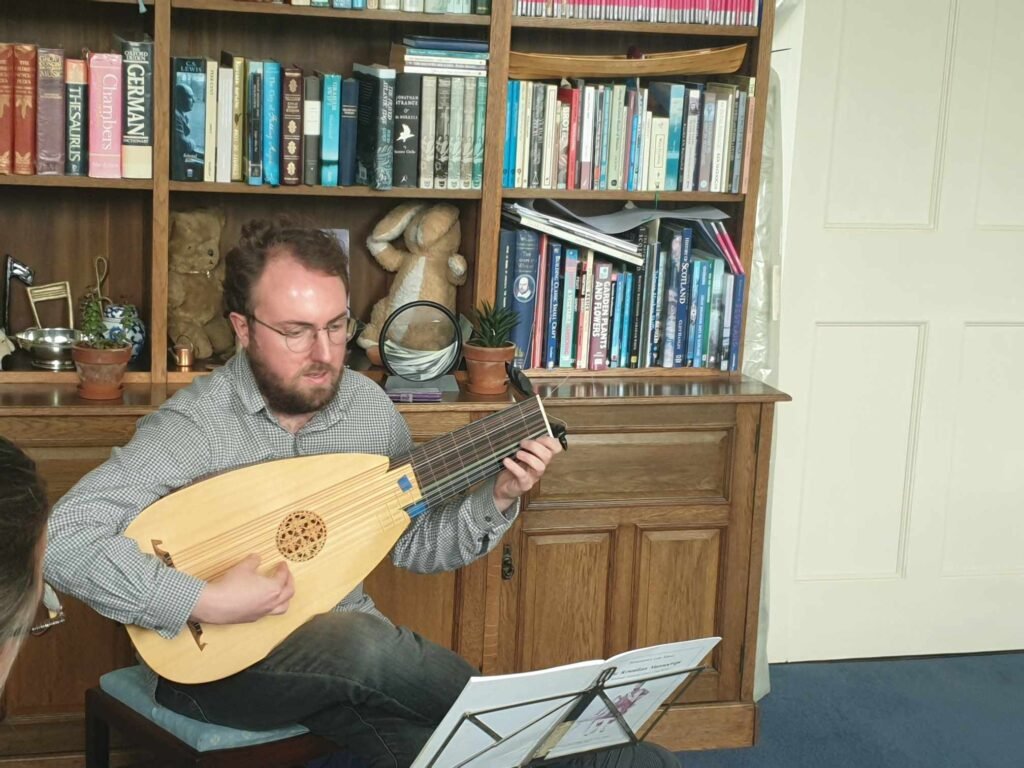
Eric Thomas also attended our August meeting with a 10 Course Lute. Eric has been learning music from a manuscript from 1620 which has been a very exciting new acquisition for Edinburgh University. Eric first played a “Fugue” which he told us was actually more like a Toccata, and then a “Ballet”. Both pieces were very expertly played. Eric then played two dances from the Rowallan Manuscript which were well suited to Eric’s instrument with its many bass courses. And of course, we all congratulate Dr Thomas on completing his PhD recently.
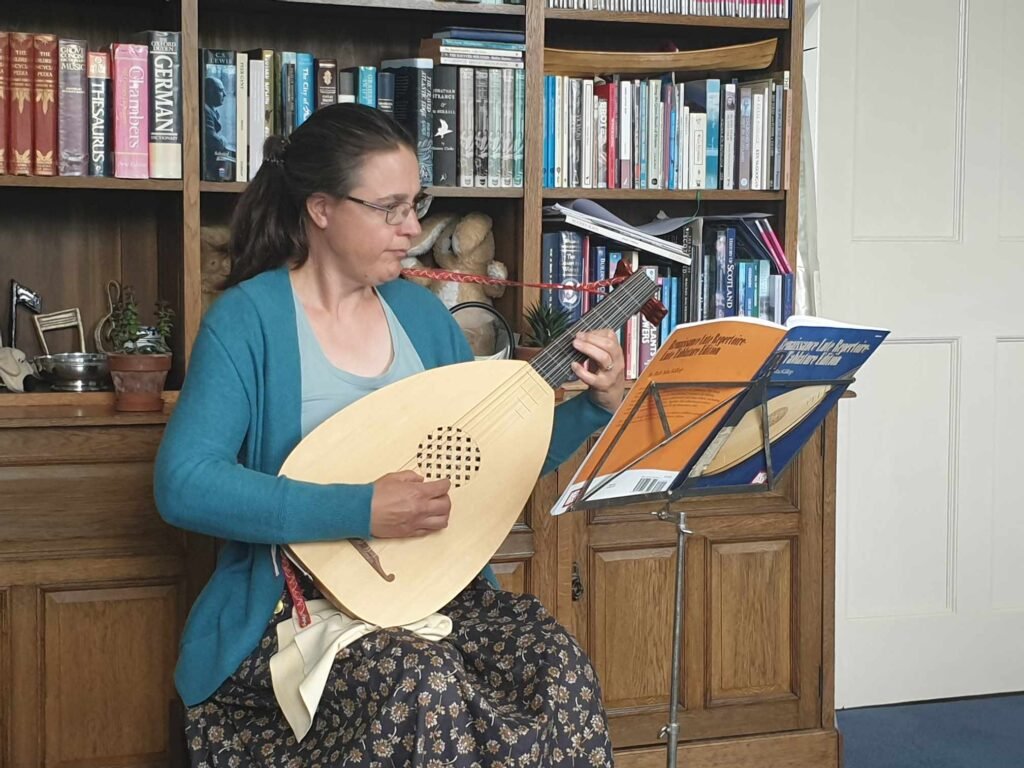
Meeting host Joanna Allsop also played three pieces on her 6-course renaissance lute. Firstly, a piece by Dowland which Joanna described as “an addictive piece”, which whenever she plays, she wants to play it again and again. Practice makes perfect after all. Joanna also played “Calliope” by Vincenzo Galilei. The tune itself features a very delicate melody which rises and falls with complicated descending patterns, but we all enjoyed some discussion of how interesting Vincenzo Galilei is. Alongside being an accomplished composer, he was also a knowledgeable theorist. Vincenzo was an advocate of equal temperament, and as a part of his repertoire he published 24 pieces, each of which corresponded to a certain scale. Any takers for the next meeting? Joanna then finished her performance with a “Preambulum” which highlighted her love and appreciation of the German renaissance repertoire.
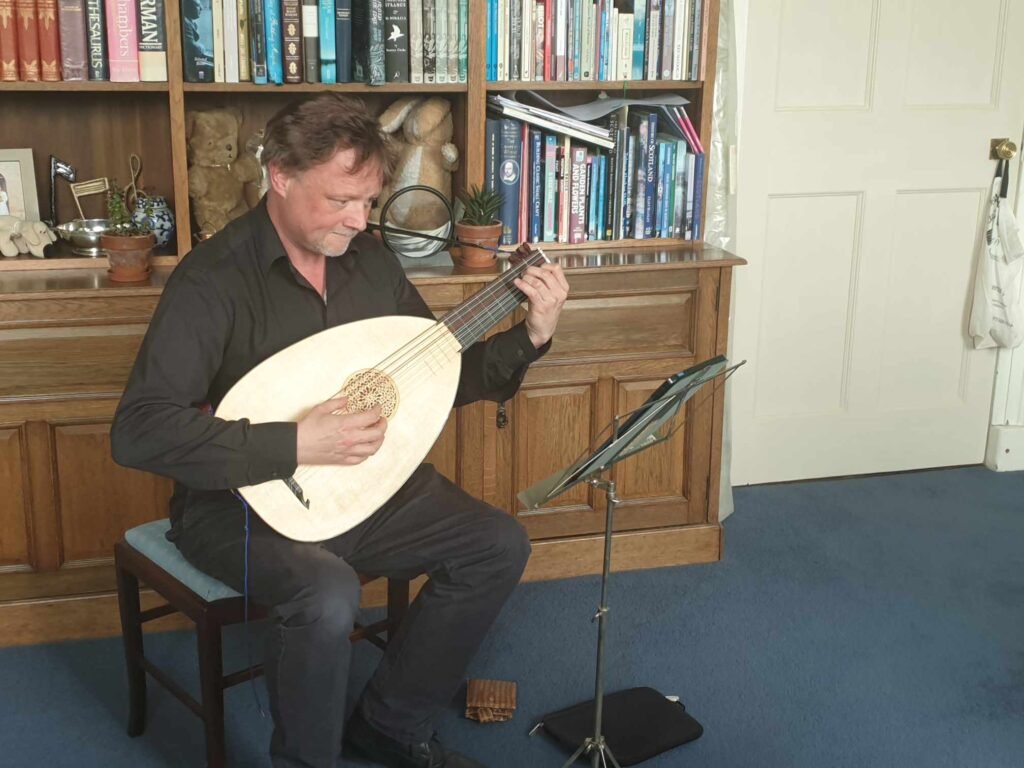
Jamie Akers rounded off our players meeting by borrowing Alastair’s 7-course lute to play Dowland’s “Lachrimae”. A piece performed so well that no one would have known it was an off-the-cuff choice played on an unfamiliar instrument. But we would hear more from Jamie in the second part of our meeting.
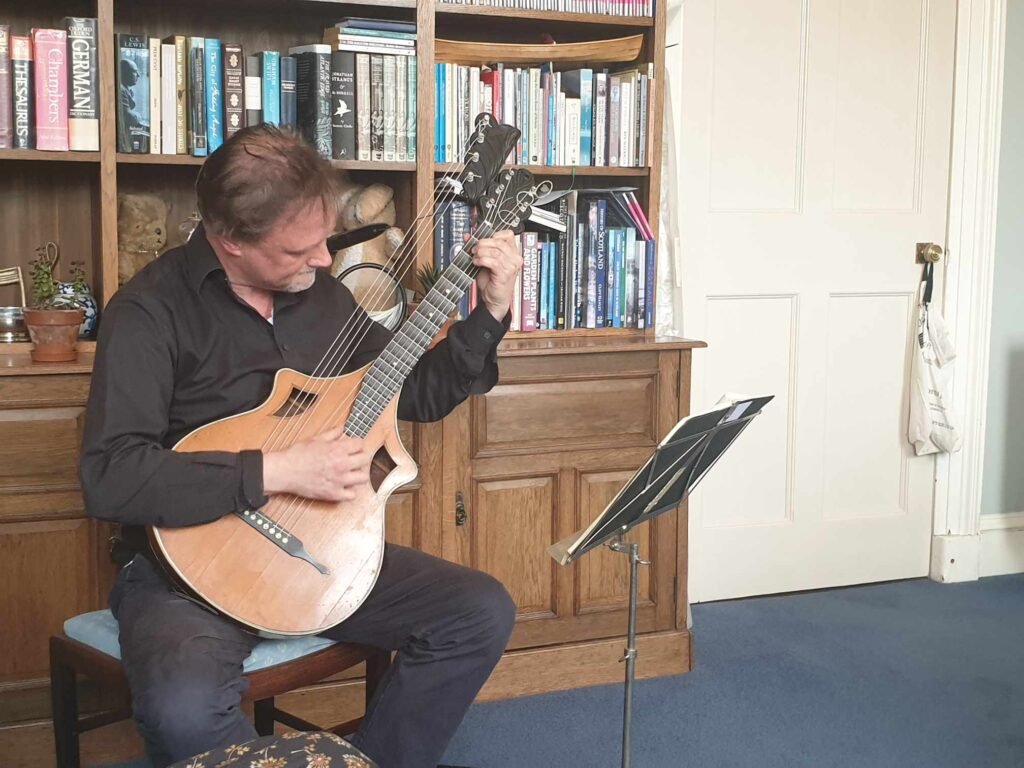
Our guest for the meeting was of course Jamie Akers. Jamie is a friend of the society and has given talks at previous meetings. Jamie has become a specialist in eastern European classical guitar (specifically Ukraine and Russia). However, Jamie has not just been researching the music of the era and the region, but also the luthiers. He feels that the classical guitar in western Europe is very well documented and respected, but also feels that the eastern influence is underrepresented in terms of its innovation and influence.
The instrument of choice for the presentation was a 10-string guitar built by one Augustus Schultz in Nuremberg. Although it doesn’t have date on it, Jamie believes the guitar was built in the 1870s or 1880s. The guitar itself is a beautiful object, featuring many of the innovations Jamie had found in his research. For example, it features the 6 standard guitar strings, and then has a second headstock bracketed on to the first which holds 4 extra floating bass strings (much like a Schrammel guitar). The guitar also has a mechanism at the neck joint which allows the player to use a watch key to adjust the angle of the neck, or even remove it completely for travel and repairs. The guitar even has scalloped frets, which led to some speculation as to how Yngwie Malmsteen would fare on the instrument.
Jamie has also considered how the culture of eastern Europe in 19th century influenced composing, publishing, and performing music. As the social structure revolved around working people and nobility, Jamie proposes there wasn’t exactly a middle class to fund the arts, or to become full-time working artists. This explains why Ivan Klinger had a military career as well as a musical one. Although it did mean that as an outsider, Vienna born Johann Decker-Schenck was able to immigrate and assume the role of a professional musician.
We were also treated to a performance of several pieces by the composers Jamie has researched. Among these pieces were two “Fantasias” by Decker-Schenk and Klinger. Jamie showed us all that if an instrument is in a condition to be played, it certainly should be. The guitar produced an exquisite tone under Jamie’s fingers, and the sonorous bass strings elevated the pieces where they were present. Jamie also played these pieces with documented techniques from the era, including tremolo picking to imitate mandolins and balalaikas, and curling the thumb over the top of the fingerboard to fret the lower strings. We all thank Jamie for his time and performance, and we hope to hear from him again.
